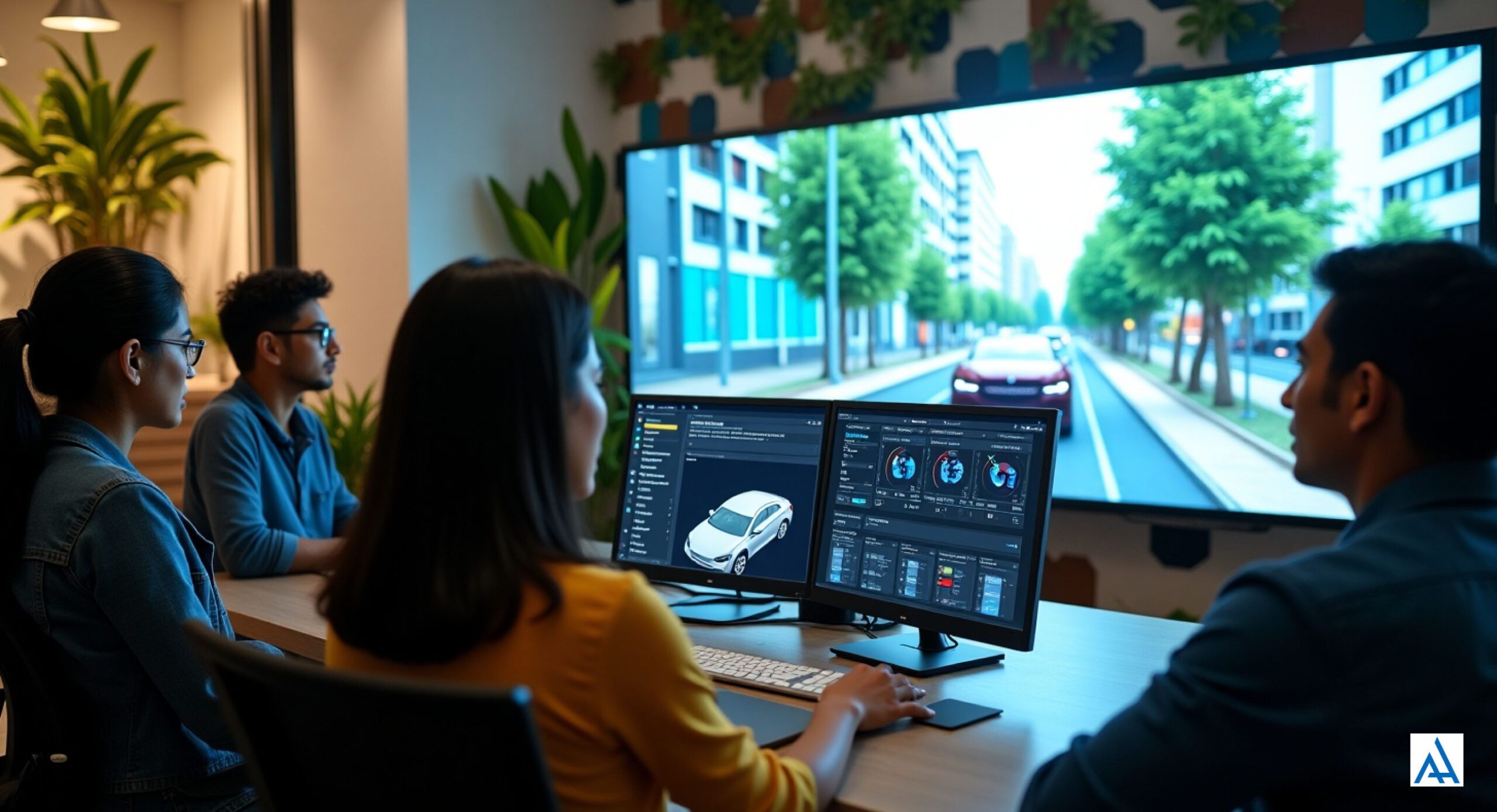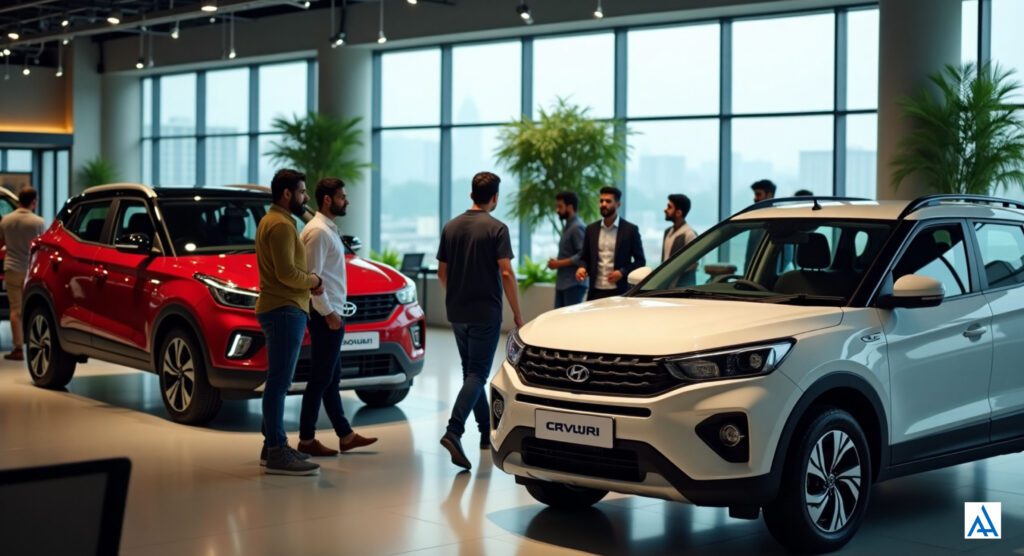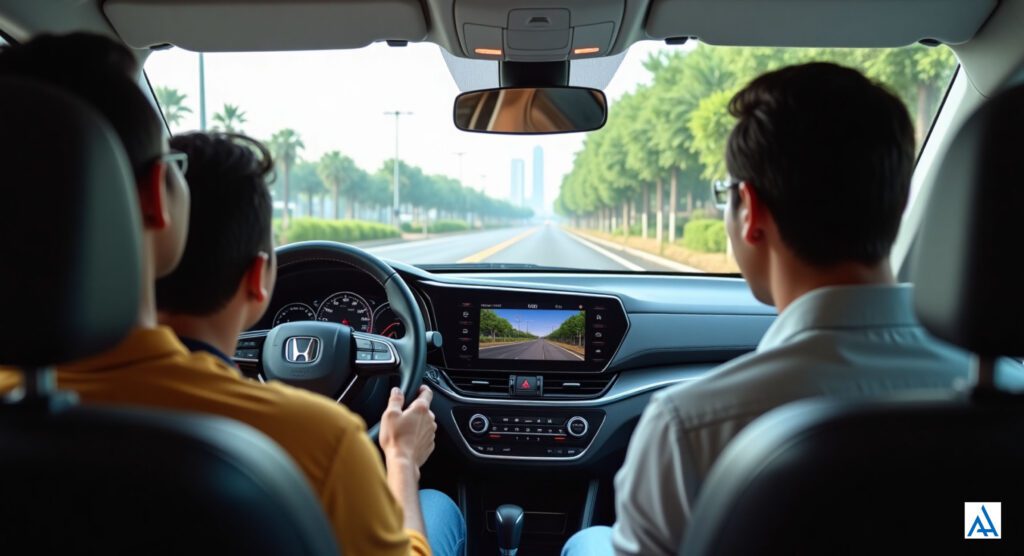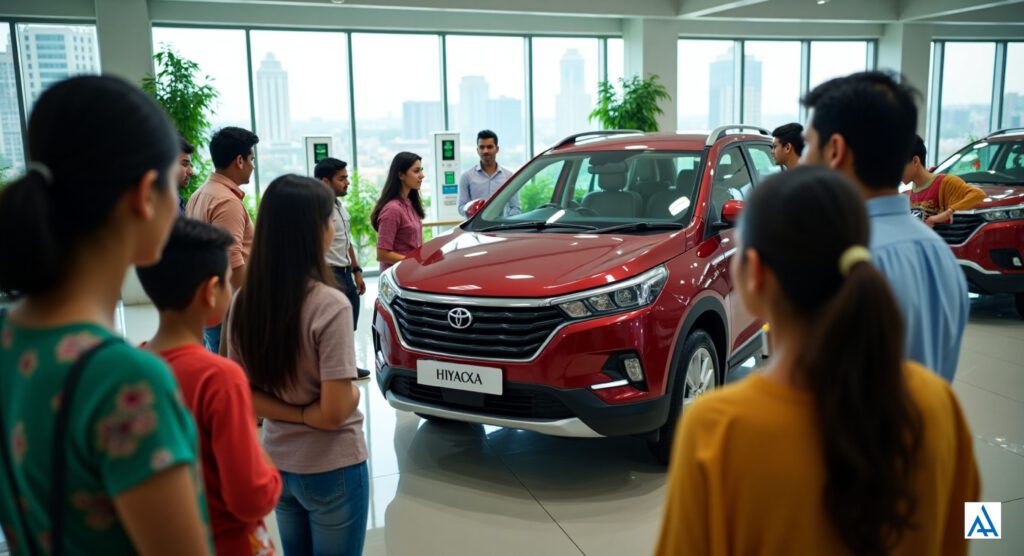In 2025, automotive innovation trends are reshaping India’s $150 billion automotive industry, paving the way for safer, smarter, and greener mobility (Inc42, 2024). With 60.4% of India’s population digitally connected (RBI, 2024) and 63 million MSMEs relying on efficient transport (MSME Ministry, 2024), these advancements resonate with 70% of urban drivers seeking sustainable solutions (Knight Frank, 2024). As India supports 3,500 IGBC-certified green projects and a 6.5% GDP growth rate (FICCI, 2024; UJA, 2025), innovations align with the 15% CAGR in automotive tech and 40% renewable energy goals (Economic Times, 2024; CEA, 2024).
Why Automotive Innovation Trends Matter in 2025

Automotive innovations, from electric vehicles (EVs) to autonomous systems, address critical challenges like urban congestion costing ₹1.47 lakh crore annually and air pollution impacting 60% of urban areas (Economic Times, 2024; The Hindu, 2024). With 500 million social media users sharing tech trends (Statista, 2025) and 50% of UPI transactions funding mobility solutions (NPCI, 2024), these advancements enhance safety, efficiency, and sustainability in 100+ smart cities and a $1 trillion digital economy (Smart Cities Mission, 2025). From Mumbai’s crowded streets to Hyderabad’s green initiatives, 2025’s innovations promise a transformative driving experience.
As an automotive technology expert, I’ve advised Indian automakers on cutting-edge solutions. This guide highlights seven key automotive innovation trends for 2025, with actionable tips to engage with these advancements.
Top Automotive Innovation Trends for 2025
1. Electric Vehicle (EV) Adoption
EVs, priced ₹10–₹25 lakh, reduce emissions by 20%, with 30% of new car sales being electric (Autocar India, 2025). In Hyderabad, EVs like Tata Nexon EV align with 40% renewable energy goals (CEA, 2024).
Actionable Tip: Explore EVs at tata.motors.
2. Level 3 Autonomous Driving
Level 3 autonomy, costing ₹2–₹5 lakh per vehicle, allows hands-free driving in specific conditions, cutting accidents by 25% (Financial Express, 2024). In Bengaluru, trials enhance smart city mobility (Smart Cities Mission, 2025).
Actionable Tip: Learn about autonomy at nvidia.com.
3. 5G Vehicle-to-Everything (V2X) Connectivity
5G V2X systems, priced ₹1–₹3 lakh, enable real-time traffic updates, reducing delays by 20% (Economic Times, 2024). In Delhi, V2X supports 60.4% digital commuters (RBI, 2024).
Actionable Tip: Check V2X tech at qualcomm.com.
4. Advanced Driver Assistance Systems (ADAS)

ADAS features like adaptive cruise control, costing ₹50,000–₹2 lakh, improve safety by 30% (ZigWheels, 2024). In Mumbai, 50% of premium cars include ADAS (Knight Frank, 2024).
Actionable Tip: Test ADAS-equipped cars at mahindra.com.
5. Hydrogen Fuel Cell Vehicles
Hydrogen cars, priced ₹30–₹50 lakh, offer zero-emission driving, supporting 3,500 green projects (FICCI, 2024). In Chennai, pilot projects test hydrogen viability (The Hindu, 2024).
Actionable Tip: Explore hydrogen tech at hyundai.com.
6. Smart In-Car Interfaces
AI-powered infotainment systems, costing ₹50,000–₹1.5 lakh, enhance driver experience with voice controls, adopted by 40% of new cars (Financial Express, 2024). In Pune, smart interfaces streamline navigation (Smart Cities Mission, 2025).
Actionable Tip: Check infotainment at bosch-mobility.com.
7. Sustainable Materials
Eco-friendly interiors, using recycled plastics and bamboo, cost ₹20,000–₹1 lakh and reduce carbon footprints by 15% (Economic Times, 2024). In Ahmedabad, sustainable cars gain traction (FICCI, 2024).
Actionable Tip: Explore sustainable models at tata.motors.
Automotive Innovation Trends Table 2025
| Trend | Cost (₹) | Key Benefits | Impact in India |
|---|---|---|---|
| Electric Vehicles | 10–25 lakh | Reduces emissions by 20% | Supports Hyderabad green goals |
| Level 3 Autonomy | 2–5 lakh | Cuts accidents by 25% | Enhances Bengaluru smart cities |
| 5G V2X Connectivity | 1–3 lakh | Reduces delays by 20% | Aids Delhi digital commuters |
| ADAS | 50,000–2 lakh | Improves safety by 30% | Popular in Mumbai premium cars |
| Hydrogen Fuel Cells | 30–50 lakh | Zero-emission driving | Supports Chennai pilot projects |
| Smart In-Car Interfaces | 50,000–1.5 lakh | Enhances driver experience | Streamlines Pune navigation |
| Sustainable Materials | 20,000–1 lakh | Cuts carbon footprint by 15% | Gains traction in Ahmedabad |
Applications of Automotive Innovations in India
- Urban Mobility: Eases congestion for 60.4% digital commuters (RBI, 2024).
- E-commerce: Supports last-mile delivery in $1 trillion market (Economic Times, 2024).
- Smart Cities: Enhances transport in 100+ urban projects (Smart Cities Mission, 2025).
- MSMEs: Optimizes logistics for 63 million businesses (MSME Ministry, 2024).
- Sustainability: Aligns with 3,500 green projects via EVs and eco-materials (FICCI, 2024).
Actionable Tip: Test drive an EV at tata.motors to experience green mobility.
Benefits of Automotive Innovation Trends
- Safety: Reduces accidents by 25–30% with ADAS and autonomy (Financial Express, 2024).
- Efficiency: Cuts traffic delays by 20% via V2X (Economic Times, 2024).
- Sustainability: Lowers emissions by 15–20% with EVs and hydrogen (CEA, 2024).
- User Experience: Enhances comfort with smart interfaces (ZigWheels, 2024).
Actionable Tip: Explore ADAS-equipped cars for safer, smarter driving.





